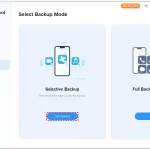Stop Overpaying to Send Rupees: Discover the Best Way to Transfer Money from the UK to India
Every year, billions of pounds are sent from the UK to India — from students supporting family back home to professionals investing in property or funding education. But here’s what many people don’t realize: the method you choose to send that money can dramatically affect how much actually arrives. Hidden fees, poor exchange rates, and slow processing times often chip away at your hard-earned money. So, what’s the best way to transfer money from the UK to India without losing out? The answer isn’t as simple as you might think.
The traditional route — walking into a bank and initiating a transfer — still works. But it’s rarely the smartest option. Banks are notorious for offering uncompetitive exchange rates and charging high flat fees, especially for international transfers. Add to that a wait time of several days, and you’re looking at an outdated solution in an increasingly fast-paced digital world.

Enter online transfer services. These platforms are not only faster but also more transparent. Unlike banks, many fintech companies now specialize in cross-border payments, meaning they’re designed from the ground up to minimize fees and maximize value. A recent report by the World Bank highlighted that online money transfer services can save users up to 60% in transaction costs compared to traditional methods — a difference that really adds up over time.
But it’s not just about cost. Speed plays a crucial role too. Some services offer instant transfers to Indian banks, while others may take a day or more. If timing matters — say you’re paying a tuition deadline or sending emergency funds — the choice becomes even more important. Also consider the recipient’s needs. Do they want a direct bank deposit, a mobile wallet top-up, or a cash pick-up option? Not all services support every method.
Another often overlooked aspect is exchange rate margin. Some companies lure users in with “no fee” transfers but sneak in profit through unfavorable exchange rates. A difference of just 0.5 INR per pound on a £2,000 transfer results in a 1,000 INR loss — that’s dinner for the whole family or a month’s worth of mobile data. Always compare not just the fee, but the total amount the recipient will receive.
Security is non-negotiable. With rising cases of fraud, it’s essential to use only FCA-regulated services with strong encryption protocols and a clean reputation. Read reviews, check for customer support availability, and avoid services with vague fee structures or unclear refund policies. If something feels off, it probably is.
Some newer platforms are delivering more than just competitive rates — they’re creating real social value. By promoting financial inclusion and empowering underrepresented communities through thoughtful, purpose-led models, these services are redefining what a truly effective money transfer platform looks like. If you’re looking for a solution that combines efficiency with impact, socially conscious options such as the best way to transfer money from UK to India offer a compelling balance of speed, affordability, and positive contribution to the broader financial ecosystem.
Additionally, if you’re sending money regularly — say, monthly family support or mortgage payments — look for services with loyalty programs or better rates for repeat customers. Some platforms even offer fixed exchange rates for a limited time, protecting you from market fluctuations.
In conclusion, choosing the best way to transfer money from the UK to India requires more than clicking the first Google result. It means comparing services, understanding where hidden costs lie, and selecting a provider that matches both your priorities and your values. In a world where financial decisions can impact lives across continents, don’t settle for “good enough.” Make your money move smarter, faster, and farther.






